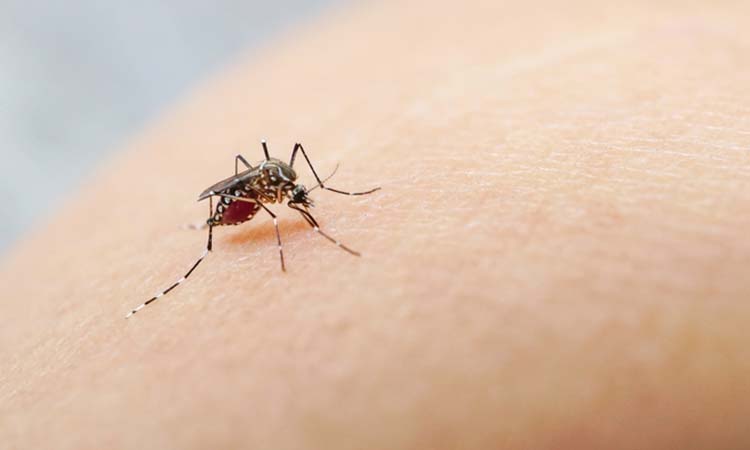New gene linked to malaria parasite resistance to chloroquine
The researchers have important implications for the ongoing fight against malaria, a disease that affects an estimated 247 million people and causes more than 619,000 deaths each year, predominantly among young children.

It was long believed that the evolution of malaria parasites to resist an important antimalarial drug was associated exclusively with a specific gene. However, an international research team recently discovered that a second gene also plays a significant role in malaria resistance to the drug chloroquine through a combination of field and laboratory studies.
The find, published in Microbiology of naturethey have important implications for the ongoing fight against malaria, a disease that affects an estimated 247 million people and causes more than 619,000 deaths each year, mostly among children.
Timothy JC Anderson, PhD, of the Texas Biomedical Research Institute and one of the study’s lead authors, emphasizes the importance of understanding how treatments contribute to the evolution of the parasite and how this process may differ across regions, particularly with increasing prevalence of drug resistant pathogens.
Introduced in the 1950s as a treatment for malaria, chloroquine has gained widespread use. However, within a short time, drug resistance emerged, initially in Southeast Asia and later spreading to Africa in the 1970s and 1980s. Although chloroquine has subsequently been replaced by various antimalarial drugs, the evolution of resistance continues to present a challenge in pest control. In 2000, scientists identified a gene called the chloroquine resistance transporter (pfcrt), which facilitated the transport of chloroquine out of crucial cellular regions in parasites, rendering the drug ineffective.
That resistance gene,pfcrt, is infamous, says Professor Michael Ferdig, PhD, of the University of Notre Dame and one of the paper’s lead authors. To find itpfcrthas a partner in crime it shouldn’t be a surprise genes interact with each other as part of evolution all the time. But it was only with new tools and our integrated approach that we were finally able to pinpoint the specific culprit.
Of the six species of malaria parasites that affect humans, Plasmodium falciparum is recognized as the deadliest. In this study, scientists from the Medical Research Council Unit in The Gambia, affiliated with the London School of Hygiene & Tropical Medicine, together with their collaborators, examined over 600 P. falciparum genomes collected in The Gambia between 1984 and 2014. This set of 30-year data revealed that mutations in a second gene responsible for encoding an amino acid transporter (AAT1) increased from 0% frequency in 1984 to 97% frequency in 2014.
This is a very clear example of natural selection in action, these mutations have been favored and passed on at an extremely high frequency in a very short amount of time, suggesting they provide a significant survival advantage, says the Gambia Unit of the Medical Research Council of the London School of Hygiene & Tropical Medicine Professor Alfred Amambua-Ngwa, PhD, and one of the first authors. The mutations inAAT1very closely mirror the increase inpfcrtmutations. That said, it strongly suggestsAAT1is involved in chloroquine resistance.
Collaborating institutions, including the Texas Biomedical Research Institute, the University of Notre Dame and the Seattle Children’s Research Institute, have joined forces to study the impact of the identified mutations on drug resistance. Through genetic crosses between chloroquine-sensitive and chloroquine-resistant parasites, the researchers experimentally evaluated the role of AAT1 mutations. They used CRISPR gene-editing technology to replace mutations in the parasites’ genomes in the laboratory, observing the subsequent effects on drug resistance. Nottingham University contributed to the research by testing the gene’s function in yeast, confirming that the mutations did indeed lead to drug resistance. Additional collaborative efforts involved Wellcome Sanger Institute, Mahidol-Oxford Tropical Medicine Research Unit, and UT Health San Antonio.
This project would not have been possible without the dedication of multiple collaborators in the United States, Europe, Asia and Africa, says Ashley Vaughan, PhD, principal investigator at Seattle Children’s Research Institute and one of the paper’s lead authors. We brought together very different methodologies, all of which came to the same conclusion.
However, the research team’s exploration extended beyond these findings. Further analysis of additional malaria genome datasets demonstrated that the AAT1 mutations responsible for conferring resistance vanished in Africa once chloroquine ceased to be used, aligning with the expected model. In Southeast Asia, however, the situation differed significantly, as the mutations persisted even after chloroquine use was stopped in the region.
Our analyzes have shown that the parasites of Africa and Asia are differentpfaat1mutations and our experimental data suggest that this may underlie the differences we observe in the evolution of drug resistance in Africa and Asia, says Dr. ferdig.
David Conway, PhD, of the London School of Hygiene & Tropical Medicine, emphasizes the importance of taking a comprehensive approach to combating drug resistance not only in malaria but in other pathogens as well. He stresses the importance of considering the holistic aspects of drug development and pathogen surveillance. Conway says understanding how different genes and molecules work together to survive treatments requires examining entire genomes and populations, underscoring the critical nature of such research.
#gene #linked #malaria #parasite #resistance #chloroquine